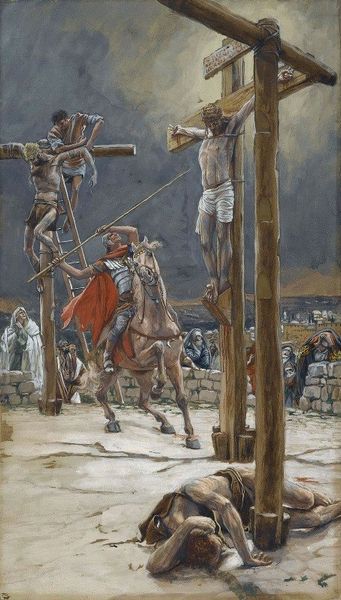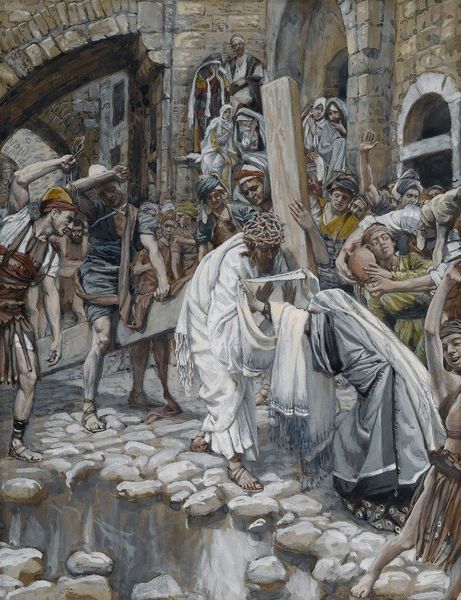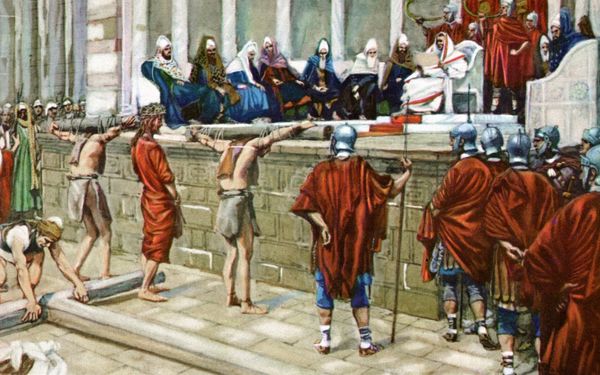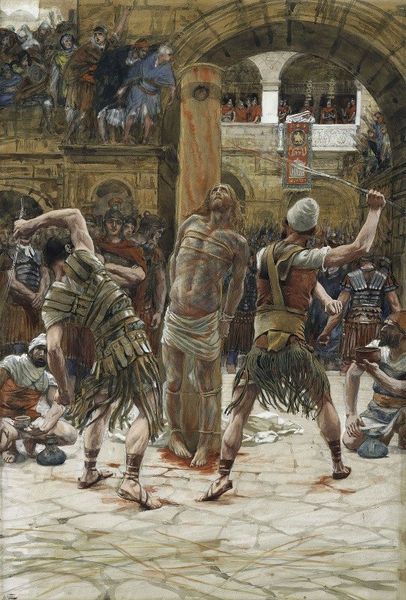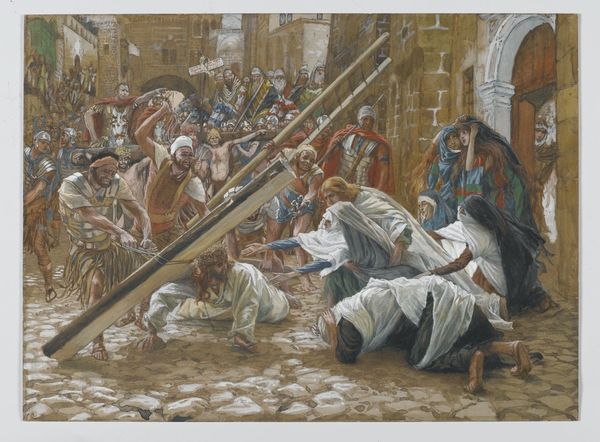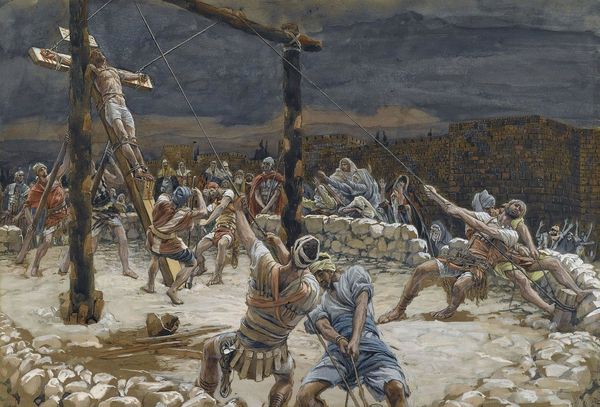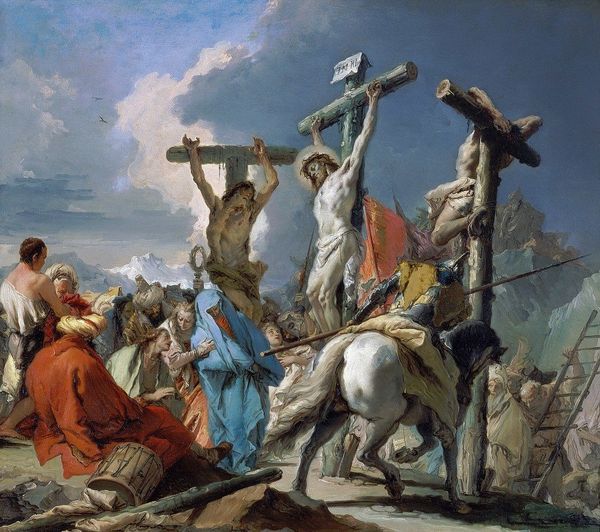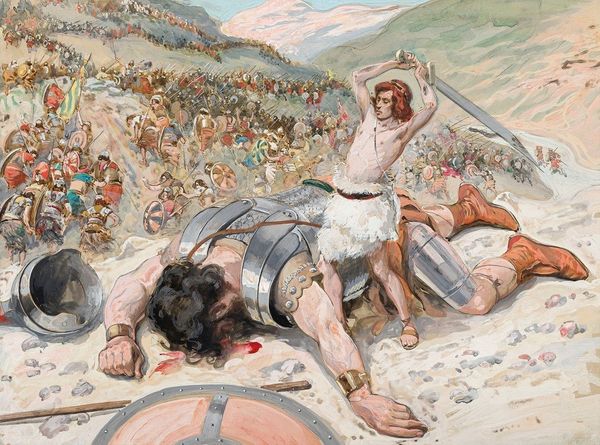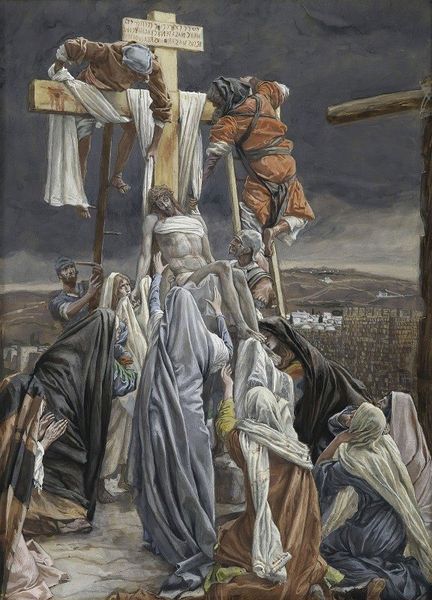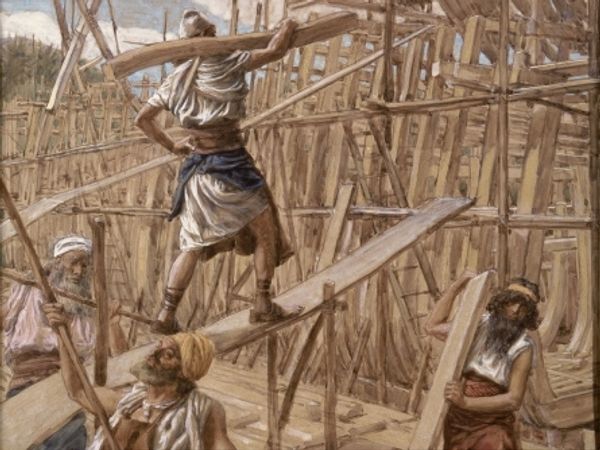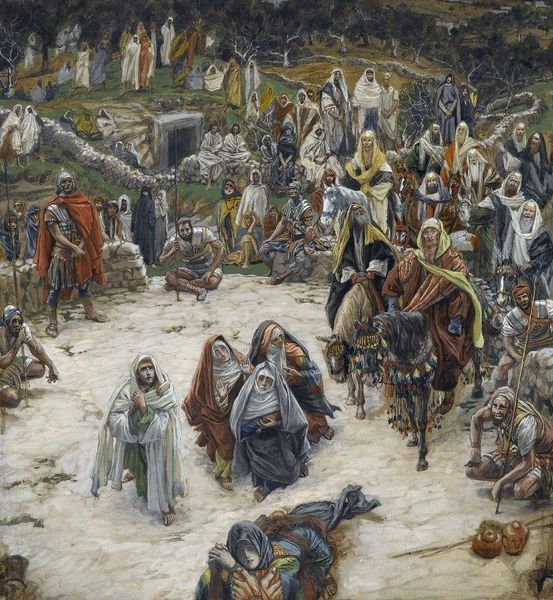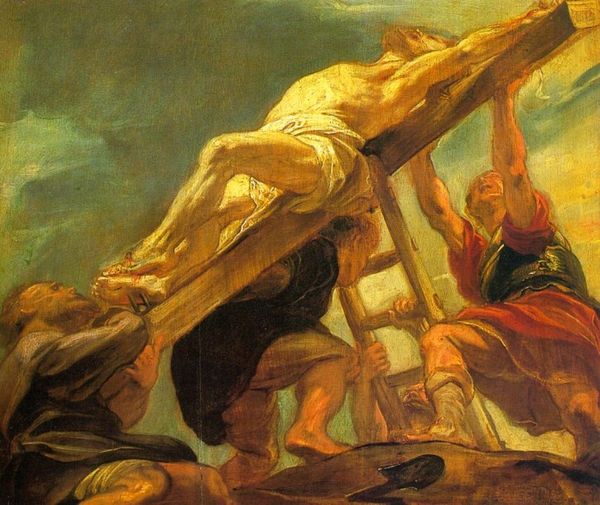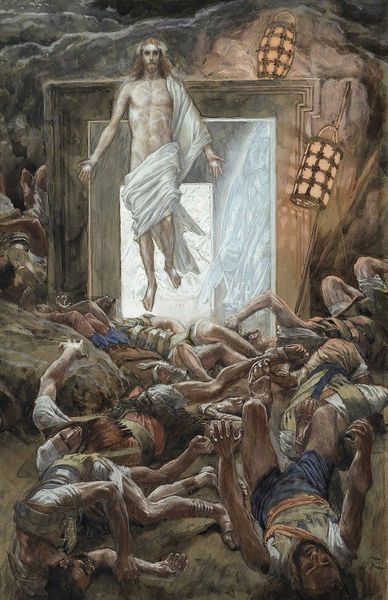
painting, oil-paint
#
narrative-art
#
painting
#
oil-paint
#
figuration
#
oil painting
#
history-painting
#
academic-art
#
realism
Copyright: Public Domain: Artvee
Editor: James Tissot's oil painting, "Simon the Cyrenian Compelled to Carry the Cross with Jesus," created between 1886 and 1894, depicts a powerful, chaotic scene. The composition is dominated by the figure of Christ and the large wooden cross. What's striking to me is how Tissot stages this event; it feels less like a divine moment and more like a political spectacle. How do you interpret this work in terms of its historical context and intended audience? Curator: It’s perceptive of you to notice that political dimension. Tissot, a French artist, painted this scene after extensive travel to the Middle East. He aimed for historical accuracy, challenging previous Western interpretations of biblical narratives. Consider the late 19th century: Western colonial powers were expanding their influence in the region, shaping cultural perceptions. How do you think Tissot’s attempt at realism might be seen as a reflection of, or perhaps a commentary on, that dynamic? Editor: That's interesting. Maybe his attempt to show a "real" version of the event also served to legitimize the European presence in the Middle East at the time? By making it seem authentic, it almost gives a visual authority to their presence. Curator: Precisely. And what does the focus on Roman soldiers, their armor and organization, communicate? The narrative subtly shifts towards the power structures that were, at the time, reasserting themselves in different forms across the world. The visual weight given to the soldiers can be interpreted as glorifying power at the expense of the suffering of Jesus and bystanders. How does it strike you that Tissot exhibited these religious paintings, including this one, to popular acclaim in secular venues, like the Parisian Salon? Editor: It's almost as if he was turning religious suffering into a kind of imperial triumph, validated in these secular spaces. Curator: Exactly. It gives us a different lens to view it and see it less as a purely religious image, but rather something interwoven with social and political climates. Thanks for those fresh observations. Editor: Thanks to you; I see Tissot’s efforts with newfound depth!
Comments
No comments
Be the first to comment and join the conversation on the ultimate creative platform.
